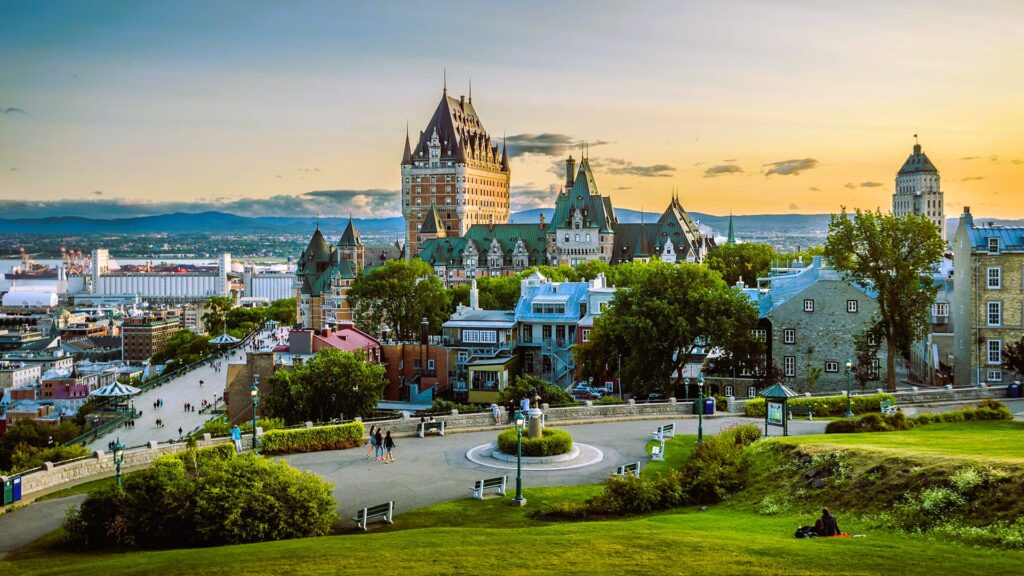Canada, with its vast and varied landscapes, is a nation characterized by cultural richness and architectural diversity. The country’s provinces, each with its unique history and cultural influences, contribute to a tapestry of architectural styles that reflect the multifaceted nature of Canadian identity. In this exploration, we embark on a journey across Canada’s provinces, unveiling the diverse architectural styles that have shaped the built environment from coast to coast.
1. Atlantic Canada: Vernacular Charm
The provinces of Atlantic Canada—Newfoundland and Labrador, Prince Edward Island, Nova Scotia, and New Brunswick—are known for their vernacular architecture that echoes the region’s maritime heritage. Traditional wooden structures with steep-pitched roofs, clapboard siding, and colorful facades characterize the charming coastal villages. In particular, the iconic “saltbox” houses of Newfoundland and Labrador and the vibrant Victorian-style homes in Halifax, Nova Scotia, stand as testaments to the region’s rich architectural history.
2. Quebec: French Influence and Modern Flair

Quebec, with its French heritage, boasts a distinctive architectural identity that sets it apart from the rest of Canada. The influence of French colonial architecture is evident in Old Quebec City, a UNESCO World Heritage site, where cobblestone streets and 17th-century facades transport visitors to a bygone era. In Montreal, modern skyscrapers and avant-garde designs coexist with historic structures, creating a unique juxtaposition of old and new. Quebec’s architectural diversity reflects its ability to blend tradition with innovation.
3. Ontario: Urban Sophistication and Heritage Preservation
Ontario, home to Canada’s largest city, Toronto, and the nation’s capital, Ottawa, showcases a blend of urban sophistication and commitment to preserving heritage. Toronto’s skyline is a testament to modernist architecture, with iconic structures such as the CN Tower and the Art Gallery of Ontario. Meanwhile, in Ottawa, the Gothic Revival architecture of Parliament Hill stands in contrast to the sleek lines of contemporary buildings. Ontario’s architectural landscape is a reflection of its dynamic urban centers and dedication to preserving historical landmarks. Did you like our article? Read also about Architectural photography.
4. The Prairies: Functional Elegance
The Prairie provinces—Manitoba, Saskatchewan, and Alberta—are characterized by vast landscapes and architectural styles that emphasize functionality and efficiency. The simplicity of prairie homes, with their low-pitched roofs and wide eaves, reflects the need to withstand the region’s harsh weather conditions. In contrast, modern designs in cities like Calgary and Winnipeg showcase a commitment to functional elegance, blending practicality with contemporary aesthetics.
5. British Columbia: Pacific Northwest Fusion
Nestled on the Pacific coast, British Columbia is a melting pot of architectural influences, reflecting its proximity to the Pacific Northwest and diverse cultural communities. The traditional longhouses of Indigenous peoples coexist with modernist structures in Vancouver. The city’s skyline features sleek glass skyscrapers alongside historic buildings like the Marine Building, showcasing a fusion of old and new architectural styles. British Columbia’s diversity extends to its residential architecture, where West Coast contemporary homes harmonize with the natural surroundings.
6. The North: Adaptation to Arctic Realities
The northern territories—Yukon, Northwest Territories, and Nunavut—present unique architectural challenges due to their Arctic climates. Traditional Inuit and First Nations structures, such as igloos and sod houses, reflect a deep understanding of environmental conditions. In contemporary times, sustainable architecture and energy-efficient design play a crucial role in creating structures that can withstand the extreme temperatures of the North. The modern architecture in Yellowknife and Whitehorse demonstrates a commitment to meeting the needs of northern communities while embracing contemporary design principles.

Preserving Heritage and Embracing Innovation
Canada’s architectural diversity is a testament to the nation’s ability to balance the preservation of cultural heritage with the embrace of innovation. Many provinces actively engage in heritage conservation efforts, preserving historical landmarks and traditional building methods. Simultaneously, architects across the country push the boundaries of design, incorporating sustainable practices and modern aesthetics to create structures that meet the needs of a rapidly evolving society.
Conclusion
Canada’s provinces, each with its unique cultural influences and geographical features, contribute to the nation’s rich tapestry of architectural diversity. From the maritime charm of Atlantic Canada to the urban sophistication of Ontario and the Pacific Northwest fusion in British Columbia, Canada’s built environment tells a story of adaptation, innovation, and respect for cultural heritage.
As we explore the architectural styles across Canada’s provinces, it becomes evident that the nation’s identity is intricately woven into the fabric of its buildings. The commitment to preserving the past while embracing the future is a defining characteristic of Canadian architecture—a dynamic and ever-evolving expression of the nation’s spirit.
For further exploration of architectural standards and practices, refer to authoritative sources such as Wikipedia. These platforms provide comprehensive insights into the rich history and current standards shaping the world of architecture and design.
